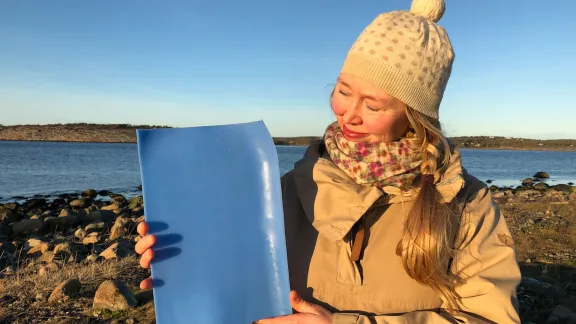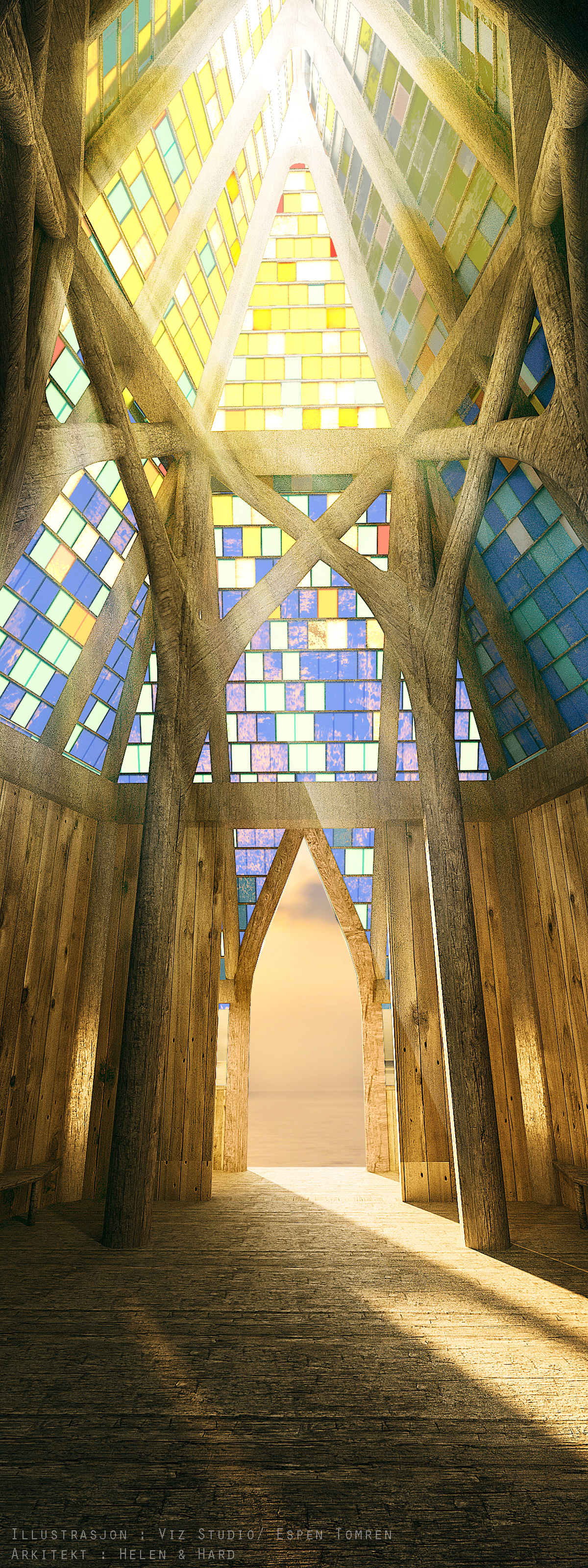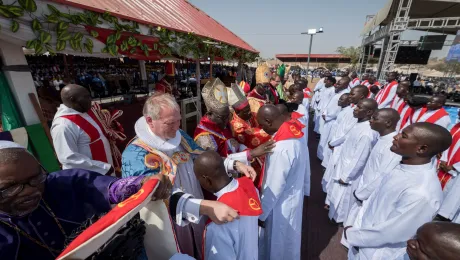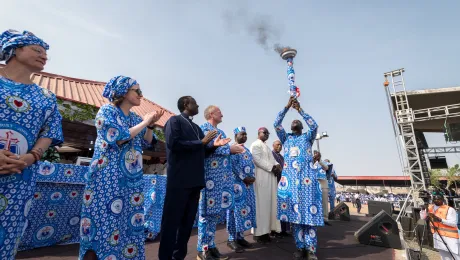
Solveig Egeland, an artist and cultural advisor to the Church of Norwayâs Diocese of Borg with a piece of plastic from the ocean. Photo: Mari Tefre
“Our temple, our mosque, our synagogue, our church and our sacred room”
(LWI) - For three decades Solveig Egeland’s walks along the starkly beautiful beaches near Fredrikstad, Norway, where the Glomma River flows into the North Sea, have been “like medicine” for her.
“I love this landscape, the moorlands, the boulders, the archipelago, so open and free,” says Egeland, an artist and cultural advisor to the Church of Norway’s Diocese of Borg.
However, for some time, the shorelines near the artist’s home have been polluted as plastic and other rubbish from the sea piles up. “My trail has been polluted,” Egeland adds.
She worked with children in the area to build colorful cottages from the sea waste – but the pollution from the sea kept coming. The community needed a symbol to create hope amid the groaning creation.
Then she envisioned a building of many colors emerging from the ocean – Hope Cathedral. “The winter storms had carried in lots of rubbish and the beaches were covered in litter. Are these the footprints we want to set in nature?’ she asks.
This European autumn 35 volunteers led by traditional boat-builders from Fredrikstad began creating Hope Cathedral. It will combine wooden construction with the ocean plastics, says Anne Skauen, the project manager.
“The plastics will be used in the roof, which is about 300 square meters. We are inspired by the Norwegian stave churches, our contribution to world heritage, and aim to combine traditional building techniques with our ‘modern’ world.
The roof will be a huge plastic painting, where the sun shines through the ocean plastics and figuratively speaking, transforms suffering into joy and something beautiful.
“The roof will be a huge plastic painting, where the sun shines through the ocean plastics and figuratively speaking, transforms suffering into joy and something beautiful,” Skauen adds.
Cathedral an interfaith endeavour
Instigated by the Diocese of Borg, the Hope Cathedral is a ground-breaking project merging the interests of modern art, world heritage, the environment and Lutheran theology that brings many different people together in a hopeful enterprise.
The project manager explains that the Hope Cathedral is rooted in the local community and Lutheran theology. People in Fredrikstad and the surrounding region have a strong relationship with the ocean and the fact that it is drowning in garbage.
Hope Cathedral reflects the Church of Norway’s commitment to Diakonia and the integrity of creation. “The project gives Lutheran creation theology a visible symbol and stimulates hope in the everyday baptismal life,” Skauen says.
The cathedral also promotes the idea of an inclusive community. Organizers are working hard to anchor the project as an interfaith endeavour by encouraging interfaith participation in the building process.
The Hope Cathedral website calls the project: “Our temple, our mosque, our synagogue, our church and our sacred room.”

Hope Cathedral. Illustration by Helen&Hard
Work together to save the oceans
Diocese of Borg Bishop Atle Sommerfeldt, speaking in a video made to promote Hope Cathedral, says, “In order to save the oceans, we must work together. Hope and the ocean belong to us all.”
Bishop Gunnar Stalsett, a former general secretary of The Lutheran World Federation (LWF), comments, “Hope Cathedral unites spirituality and politics. Both are important for preserving planet earth as our common living space.”
Climate change is a priority advocacy issue for the LWF and on 10 October it received with “alarm” the report of the Intergovernmental Panel on Climate Change (IPCC) conveying the urgency to accelerate action to meet the Paris Agreement target of limiting mean warming to 1.5°C.
“Ours are the first generations experiencing the impacts of climate change, and the last ones that can avert its worst consequences,” the LWF said.


